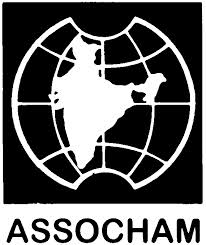West Bengal is ranked on top with production of over 250 crore cut flowers across India thereby clocking highest compounded annual growth rate (CAGR) of over 597 per cent during five year period of 2007-08 and 2011-12, noted a recently concluded study by apex industry body ASSOCHAM.
“West Bengal has also emerged numero uno with highest share of about 34 per cent in production of over 740 crore cut flowers throughout the country as of financial year 2011-12, production of cut flowers in India is growing at a CAGR of over 14 per cent,” according to a study titled ‘Value addition to rural economy: The promise of floriculture,’ conducted by The Associated Chambers of Commerce and Industry of India (ASSOCHAM).
“Festivals, weddings, large scale political functions and other special occasions are driving demand for cut flowers as they are mostly used for decorative purposes, as gifts/bouquets for formal events,” said Mr D.S. Rawat, national secretary general of ASSOCHAM while releasing the findings of the chamber’s study.
“Though the initial investment is very high, flower production gives much higher returns compared to traditional crops, however, one has to wait for four to five years for breakeven,” said Mr Rawat.
West Bengal is ranked eighth in terms of production of loose flowers. The state produces about 64,000 tonne loose flowers clocking a CAGR of over seven per cent during the aforesaid period. While loose flower production in India is growing at a CAGR of over 17 per cent as India produces over 16.5 lakh tonne loose flowers annually.
However, area under flower production in West Bengal has shrinked from about 27,000 hectares in 2007-08 to about 24,000 hectares in 2011-12 thereby registering fall at a CAGR of over three per cent, pointed out the study prepared by the ASSOCHAM Economic Research Bureau (AERB).
Apart from this, share of West Bengal in area under flower production across India also plummeted by seven per cent during the aforesaid period i.e. from about 16.5 per cent share in 2007-08 it came down to 9.4 per cent in 2011-12, highlighted the study.
It is estimated that about two lakh people are involved cut flower production in West Bengal which is blessed with diverse agro-climatic conditions suitable for flower production.
Dedicated cold storage facilities for flowers near to the main production centres would give a boost to exports of flowers from West Bengal, besides promotion of bio-technology especially tissue culture and genetic engineering would only further help the in realising its
potential in floriculture industry in the state, noted the ASSOCHAM study.
Ensuring availability of quality seeds and improved varieties of planting materials, domestic development of capabilities for establishing poly-houses/shade-houses, providing loans at attractive interest rates to farmers willing to produce flowers, luring private sector participation for investments by offering tax rebates and incentives, conducting buyer-seller meets across India and even abroad are certain key policy recommendations listed in the ASSOCHAM study to further promote floriculture industry in West Bengal and other parts of India

